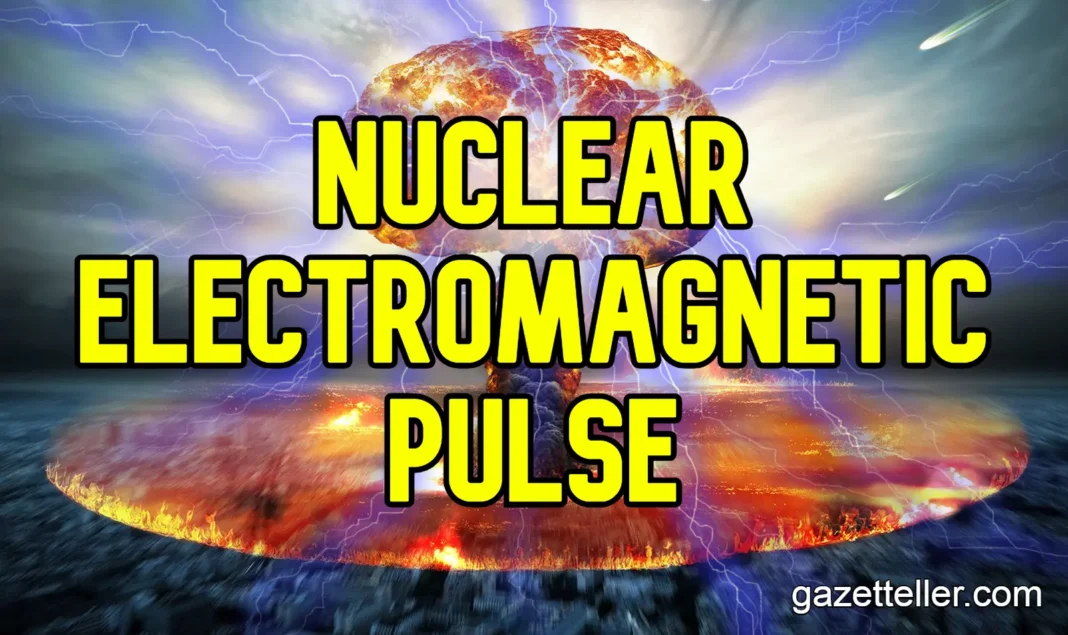
In the dimly lit rooms of strategic bunkers, a new kind of warfare is evolving. A chilling revelation points to the emergence of electronic warfare so sinister it might change the dynamics of international conflict forever. New intelligence points towards certain nations, notably Russia and China, investing in what could be the most potent and disruptive form of weaponry since the atom bomb.
According to an incisive congressional study made available after a security review by the Pentagon, these nations have embarked on the creation of potent nuclear bombs. But their objective is not a massive mushroom cloud of annihilation. Rather, these bombs are crafted to unleash super-electromagnetic pulse (EMP) waves. These waves, silent and invisible, have the potential to wreak unprecedented havoc, crippling electronics — from the smartphone in your hand to the vast electric grids powering cities.
The scale of impact?
Think hundreds of miles.
These weapons, insidiously embedded in the military strategies of Russia, China, North Korea, and Iran, represent a radical shift in warfare paradigms. Referred to under various nomenclatures—Sixth Generation Warfare, Non-Contact Warfare, Total Information Warfare, and the ominous “Blackout War“—they pose a severe and immediate threat.
Unlock the Secrets of Long-Lasting Survival Foods with ‘The Lost Superfoods’!
What makes this weapon system more alarming? The devastation does not come with the ear-shattering blasts or the heart-wrenching sight of cities turned to rubble. These EMP attacks will be carried out at such altitudes that there will be no immediate effects harmful to humans. Instead, within seconds, these EMP waves will disable every electronic device in their range. Enemy military tacticians see these strikes not as acts of nuclear warfare but as a strategic method to force opponents to bow without spilling blood.
To bring the gravity of the situation to light, consider this: a single nuclear weapon can potentially trigger an EMP assault on a region as vast as North America. The sky’s the limit—literally—with the intensity and range of the EMP wave determined by the altitude at which the bomb is detonated.
Worryingly, super-EMP bombs have the capability to render strategic communications and intelligence systems useless. The gamma rays they produce can generate EMP fields with a strength of up to 200,000 volts per meter. China, Russia, and perhaps North Korea have armed themselves with these weapons. Shockingly, the United States has no such weapons in its arsenal.
The declassified report paints a grim picture of potential scenarios: Iran incapacitating Israel, Egypt, or Saudi Arabia; China throwing Taiwan into the dark ages or disabling U.S. aircraft carrier strike groups; North Korea targeting Japan—a nation heavily reliant on electronics; Russia blanketing Europe in darkness, disrupting NATO; or even extremist groups like the Islamic State procuring nuclear weapons to unleash electronic chaos over regions like Italy.

As for the United States, the congressional report sketches a bleak scenario. In a conflict with global powers like China or Russia, the first salvo could be an EMP strike, incapacitating the U.S. nuclear command and control. The U.S.’s prized assets could be rendered ineffective, even threatening its nuclear deterrent’s very survival.
As tensions escalate on the global stage, it seems Moscow has embraced a new nuclear strategy, one that might be fine-tuned for EMP attacks. This evolution points to an unsettling reality. As societies, we’ve become perilously dependent on technology. Our ties to the natural world, to our roots, are weakening. We’re treading a perilous path, becoming increasingly vulnerable to these silent, unseen attacks.
It’s time for introspection.
Can we survive without our devices, cars, or even the convenience of supermarkets?
If the lights go out tomorrow, are we prepared?
With nations advancing in EMP technology, the threat to key facilities like missile defenses, command centers, and bomber wings is real. An EMP strike could disrupt military command, communication, and cripple nations.
As this electronic menace looms large, it’s clear that the next world war might not be one of destruction, but of disconnection.
Recent intelligence suggests that North Korea, known for its cunning strategies and covert operations—like the secret transfer of SA-10 surface-to-air missiles to Cuba—might possess the capability to use a short-range missile equipped with a nuclear warhead to render the Texas electric grid useless. The objective? A tactical move designed to coerce the United States into halting its military exercises in strategic areas like South Korea.
Peter Pry, a seasoned ex-CIA officer and the brains behind the new congressional report, voiced concerns over the country’s vulnerability. “The US stands on the precipice of peril because of its staggering reliance on information systems and computerized technologies,” Pry noted. Highlighting the Achilles’ heel, he emphasized, “Our military’s crucial administrative data traverses through the civilian internet. We, as a society, are at the pinnacle of technological advancement, which ironically places us squarely in the crosshairs of a potential EMP attack. What’s even more jarring is our adversaries’ perception; they don’t deem an EMP onslaught as an act of nuclear warfare.”

The freshly revealed report underscores the alarming reality: EMP attacks aren’t mere speculation or the stuff of science fiction. They are explicit stratagems being discussed and incorporated into military doctrines.
Take, for instance, Russian General Vladimir Slipchenko’s pioneering revelation in his seminal work “Non-Contact Wars” penned back in 2000. Slipchenko paints a vivid picture, “A solitary, low-yield nuclear weapon detonated at an elevated altitude can produce an electromagnetic pulse that envelops and incapacitates a vast region, annihilating electronic apparatuses, yet sparing human lives from the devastation of a nuclear explosion.”
In parallel, China, a behemoth in the global arena, echoes a similar sentiment in its military doctrines. A pivotal book on “Total Information Warfare” by Shen Weiguang warns of the dire repercussions of an EMP attack. Shen writes, “The moment its digital networks are compromised and obliterated, the nation will descend into a paralyzing limbo, grinding the daily existence of its populace to a halt.” Emphasizing the urgency, Shen propounds the creation of “nuclear electromagnetic pulse weaponry,” coupled with cyber arsenals to ensure China can thwart Western powers, most notably the United States.
Iran, not one to be left behind in this shadowy game, has incorporated EMP strategies in its military manual, “Passive Defense“. The book elucidates, “Given the lack of conventional destructive impacts synonymous with nuclear weapons, especially the loss of human lives, weaponry derived from electromagnetic pulses has emerged as a beacon for utilization in future conflicts.”
To add fuel to this raging inferno, North Korea’s provocations following its latest subterranean nuclear test are more than just posturing. Their state-controlled media platforms suggest that the thermonuclear experiment included evaluations for EMP offensives.
As the electronic clouds gather ominously over nations, one fact is inescapable: the next significant global conflict might not involve blazing guns or roaring jets.
Instead, it could be an insidious, silent, electronic phantom sweeping across skies, disabling entire nations in its wake.
We stand forewarned.
The question is, will we act before the invisible enemy above paralyzes us?





